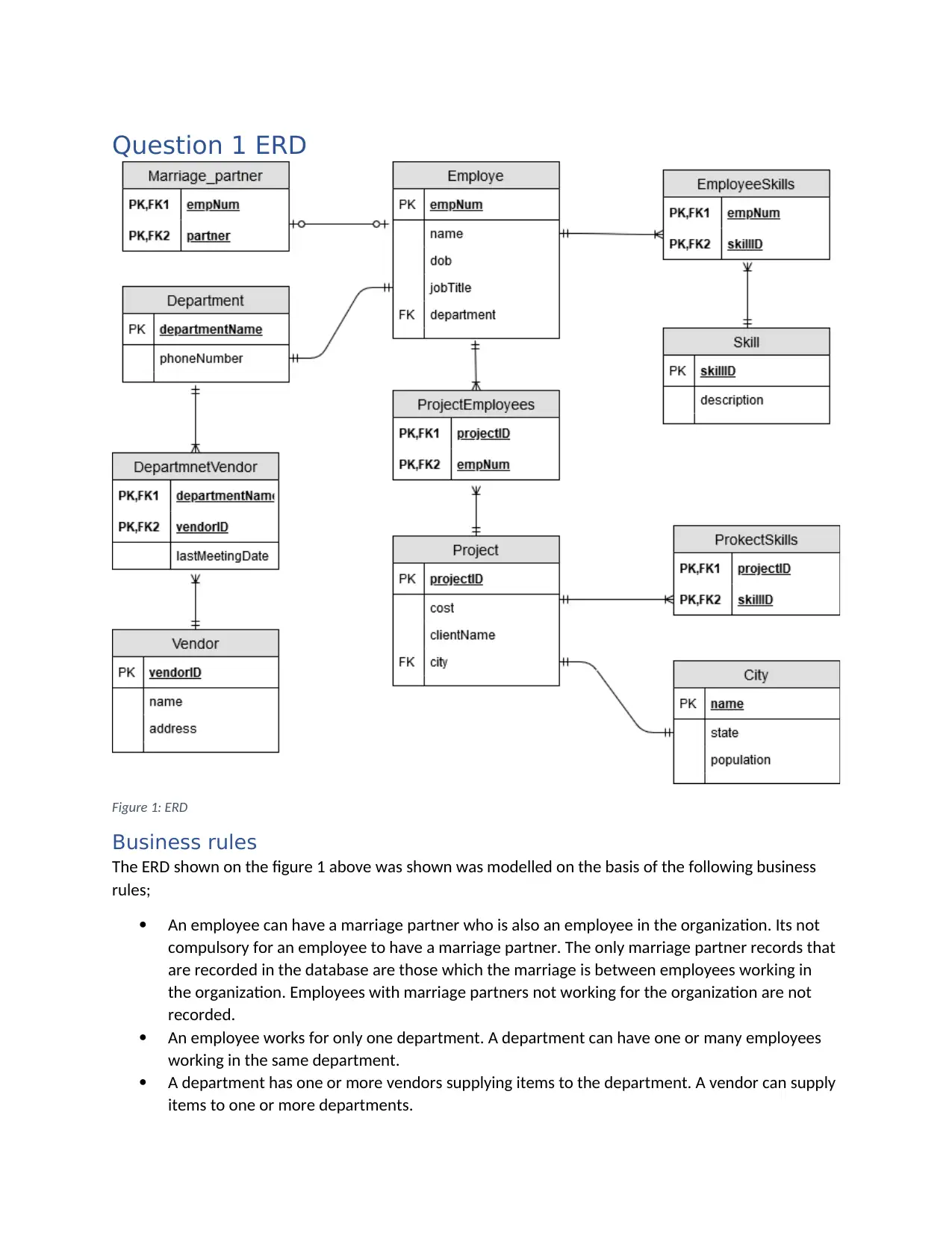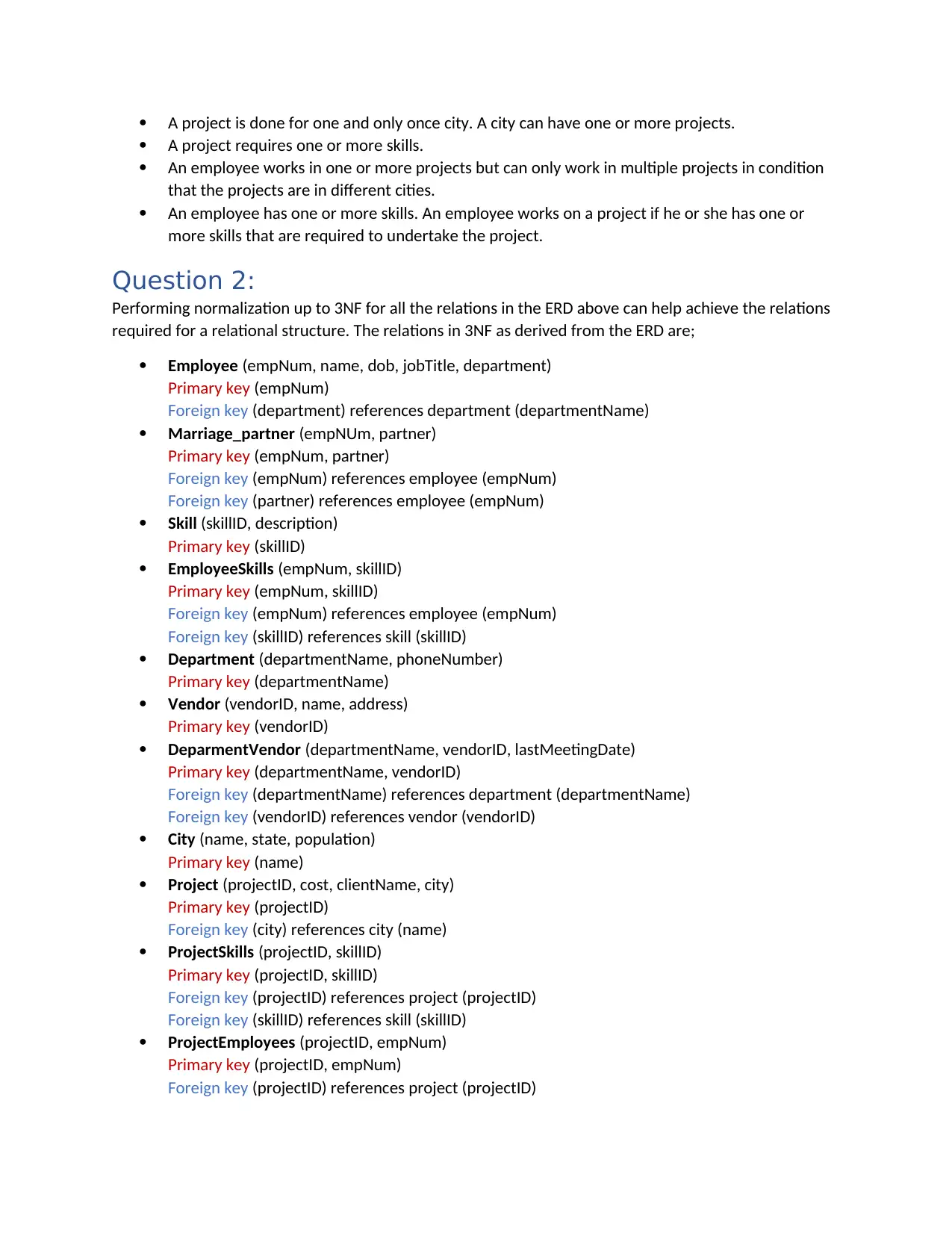Database Design and Normalization Assignment for ECM38IS Module
VerifiedAdded on 2022/08/14
|3
|532
|101
Homework Assignment
AI Summary
This assignment solution addresses a database design problem for Vision Technologies, an engineering firm. The solution begins with an Entity-Relationship Diagram (ERD) based on provided business rules, encompassing employees, departments, vendors, projects, and skills. It details the relationships between entities, such as employees working in departments and projects, and vendors supplying departments. The solution then proceeds to normalize the relations up to the Third Normal Form (3NF), creating a relational structure. The normalized relations include Employee, Marriage_partner, Skill, EmployeeSkills, Department, Vendor, DepartmentVendor, City, Project, ProjectSkills, and ProjectEmployees. Each relation's attributes and primary/foreign keys are clearly defined, ensuring data integrity and efficiency for the database system.
1 out of 3









![[object Object]](/_next/static/media/star-bottom.7253800d.svg)